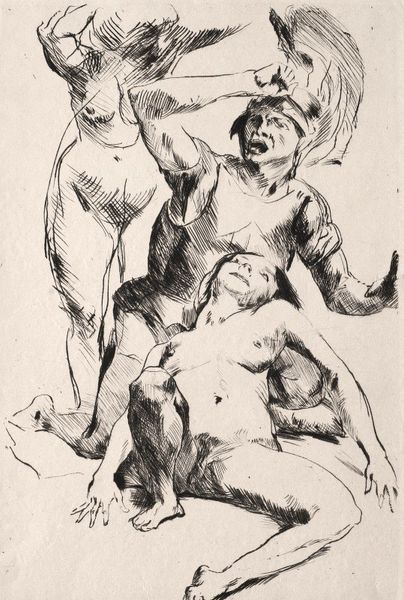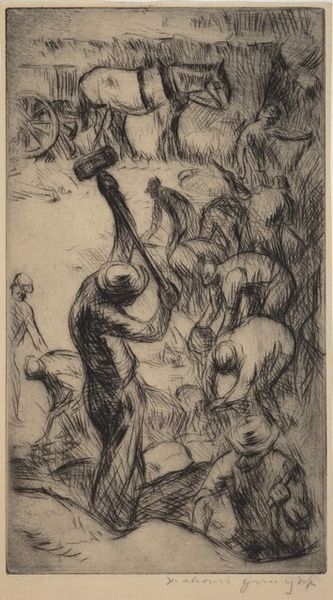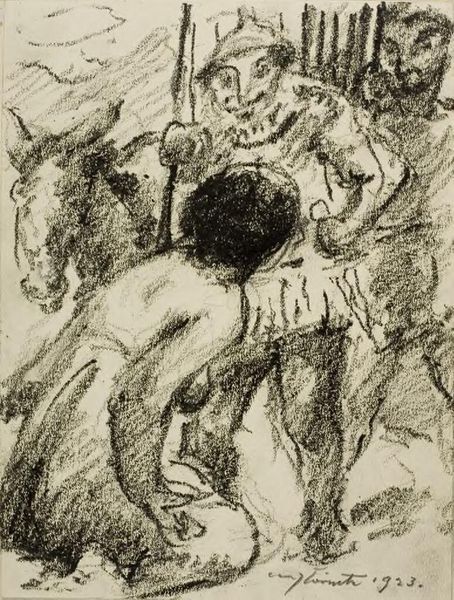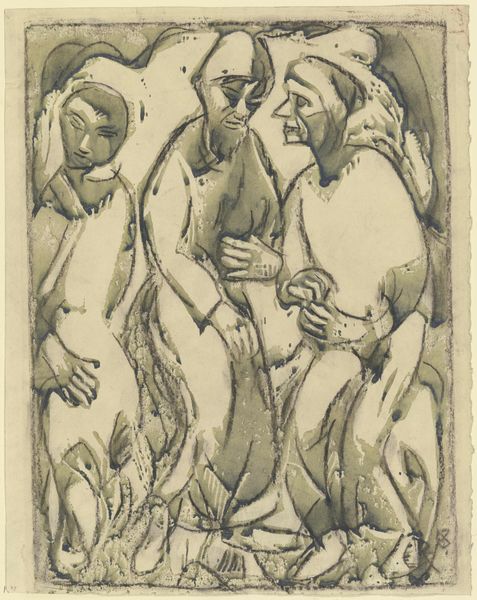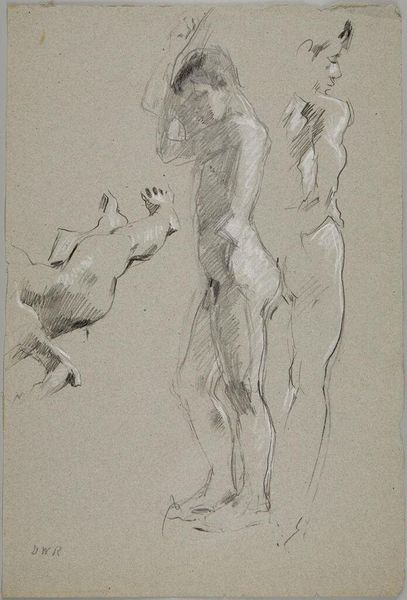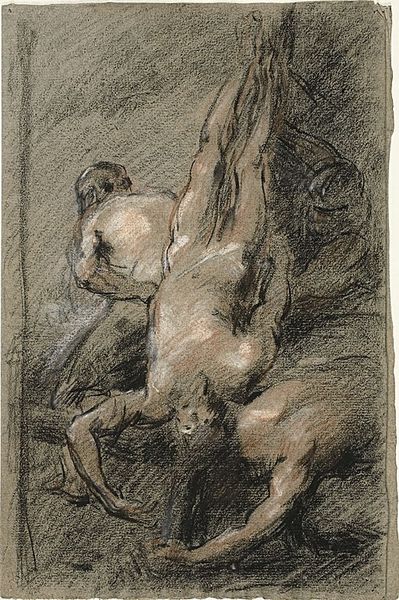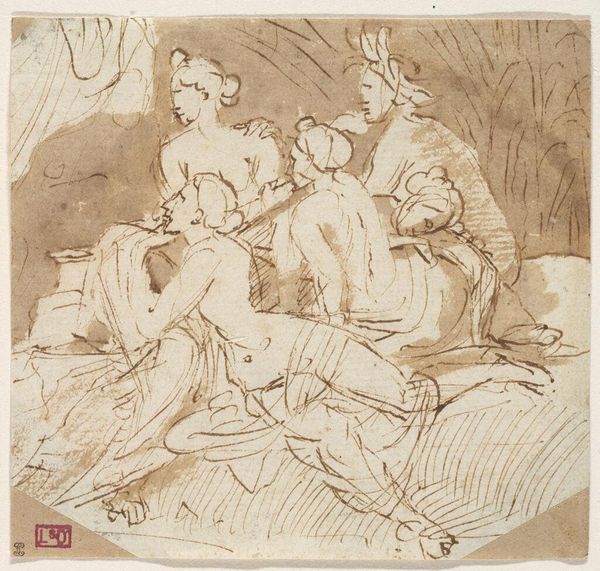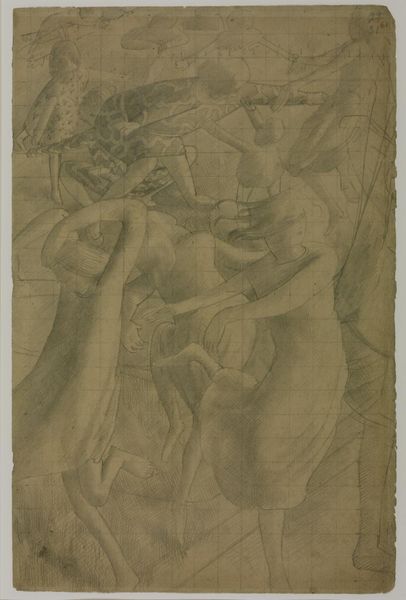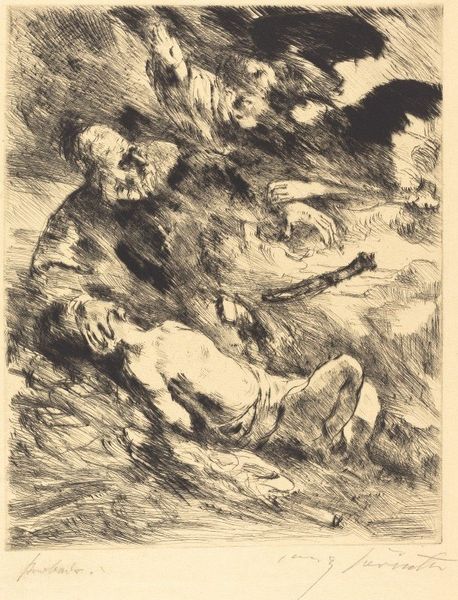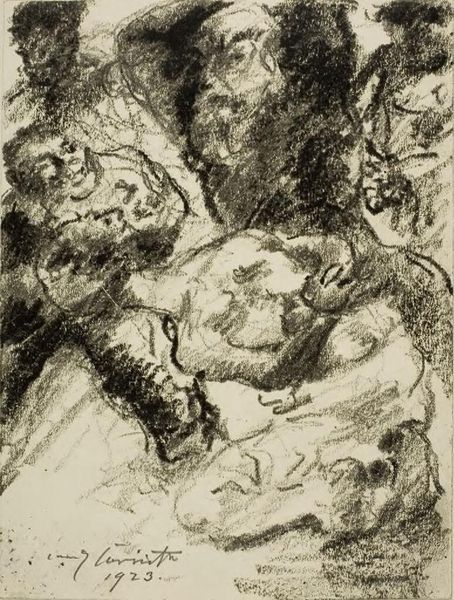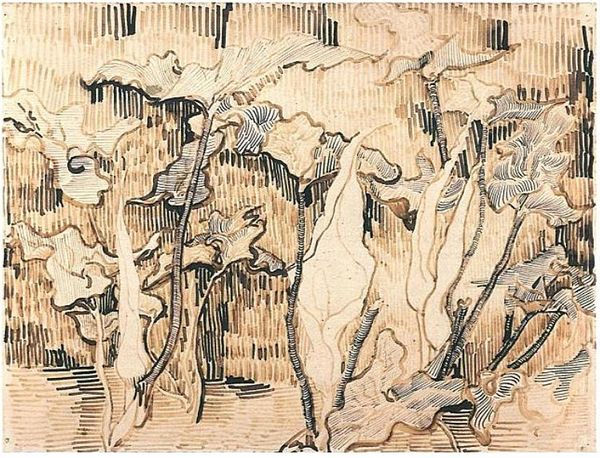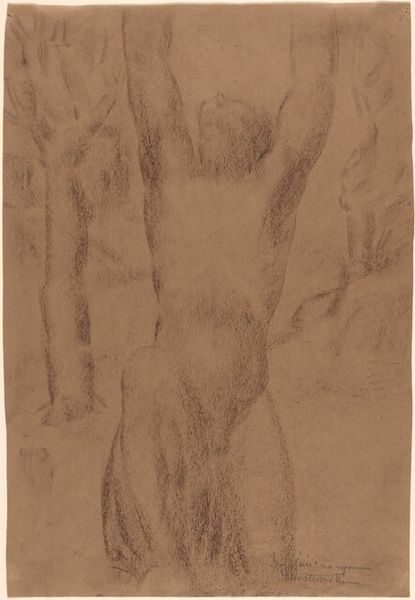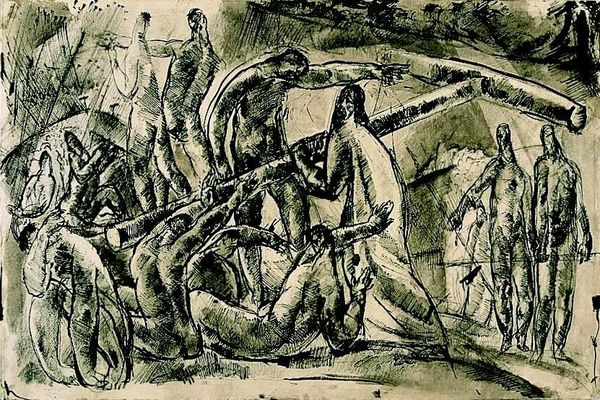
drawing, ink, pen
#
drawing
#
narrative-art
#
pen sketch
#
figuration
#
ink
#
pencil drawing
#
pen
#
academic-art
#
nude
Copyright: Public domain
Curator: This is Vajda Lajos's 1924 drawing, "The Judgement of Paris," rendered in pen and ink. Editor: It’s strikingly evocative. The textures, achieved solely through lines, give the figures a almost tangible quality despite their ambiguous forms. It’s quite haunting in its sketchiness. Curator: Yes, Lajos's work here speaks to the materiality of the artistic process. The labor is evident in the dense cross-hatching. How does the social context play into this piece? Editor: This artwork allows for an analysis within an intersectional lens, considering the historical idealization and objectification of the female form. It questions who is judging whom, in light of classical myths like the Judgement of Paris. Curator: Indeed. It raises interesting questions about the accessibility and purpose of representing the nude in visual culture. The contrast between the solidity of the figures in the foreground and the sketchier women raises production value questions. Was he focusing the materials for deliberate symbolic intent? Editor: Definitely! Especially as it is an allusion to the classic narrative which speaks to the politics of beauty, power, and choice, still poignant and provocative in modern times. Lajos pushes against boundaries within historical narrative itself. Curator: Agreed, it is more than just an exercise in figuration and medium. There is tension here. Considering that the drawing medium itself can speak volumes about accessibility in production and who this artist may have imagined their audience being. Editor: Ultimately, it forces a re-evaluation of societal gaze and the complex relationship between the observer, the observed, and the cultural narratives in play. The line work here is so precise and delicate, which feels like a very strong response. Curator: A valuable re-framing indeed. Seeing how Lajos used seemingly simple materials to evoke something with far reaching commentary certainly impacts my perception of the work, too. Editor: Absolutely, thinking about its legacy through the context and craft—offers us the opportunity to challenge art historical canon.
Comments
No comments
Be the first to comment and join the conversation on the ultimate creative platform.
